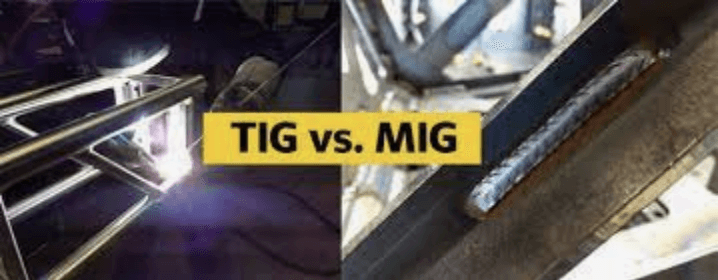Which Is Better, MIG Welder or TIG Welders Welding?
by Mehedi H. Promote Youtube Video (vidilot.com)MIG Welder Vs TIG Welders Welding

Welding is a method of manufacturing that uses heat and pressure to permanently unite two pieces of metal.
Professionals in the business use various welding processes to construct the required assemblies, each optimized for a given item and set of manufacturing requirements.
MIG Welder and TIG Welders welding are two of the most popular techniques in the industry.
In the following article, we'll examine the similarities and differences between the two, as well as the materials used and common industrial uses of each.
Different Forms of Welding
Many methods and tools are available now that significantly improve welding quality for a wide range of materials and final products. We discuss here the best mig welder and tig welders welding.
Electric current is used in arc welding to fuse metals.
There are several kinds of arc welding, such as metal inert gas (MIG) welding and inert tungsten gas (TIG) welding.
Mechanical friction in friction welding melts the bonding and base materials. Both metals and thermoplastics may be used in this method. Electron beam welding involves directing a stream of electrons through a joint, melting the materials. Thicker components and materials are often processed in a vacuum.
Fast and efficient, laser welding uses a laser to melt and fuse materials like metals and thermoplastics.
The base materials are melted and joined by resistance welding using heat produced between electrodes or revolving wheels.
Spot welding and seam welding are two examples.
MIG Welder and TIG Welder use the same basic principle: an electrical current generates heat, which melts the base materials and bonding materials, resulting in a solid junction once cooled. There are some parallels between the two methods, but they are best used in different situations.
Advantages and Uses of Mig & TIG Welding
Tungsten inert gas (TIG) welding is adaptable, allowing experts to connect a wide variety of thin and tiny materials. A tungsten electrode is used to heat the metal, and the filler is optional.
Due to being so much less efficient than MIG welding, it may add substantial time and money to production schedules. Welders also need extensive training to be precise and accurate in their work.
However, it also provides more control over the welding process. It results in joints that are sturdy, accurate, and visually beautiful.
MIG welding (metal inert gas welding) is often the method of choice for big and thick materials. The consumable wire serves as both the electrode and the filler material.
It's significantly quicker than TIG welding, which means shorter lead times and fewer manufacturing costs. It's less complicated to pick up, and the welds it creates need almost minor post-weld cleanup or polishing. On the downside, its welds aren't as exact, sturdy, or clean as those produced by TIG welding processes.
Standard Materials for Metal Inert Gas and Gas Tungsten Arc Welding
MIG and TIG welding is versatile and may be used with a wide variety of metals; however, MIG welding is better suited for thick materials, while TIG welding is better suited for thin materials. Aluminum, carbon steel, and stainless steel are all common weld materials.
Mig Welder Cart is a comprehensive, honest reviews website. All welding accessories, and materials, from aluminum to carbon steel and stainless steel, are best for tig and MIG welders. It's no problem.
Contact us if you're interested in hearing more about our welder reviews. Visit our website and ask for reviews of mig welder, tig welder, and welding accessories.
Sponsor Ads
Created on Nov 11th 2022 09:35. Viewed 205 times.
Comments
No comment, be the first to comment.



